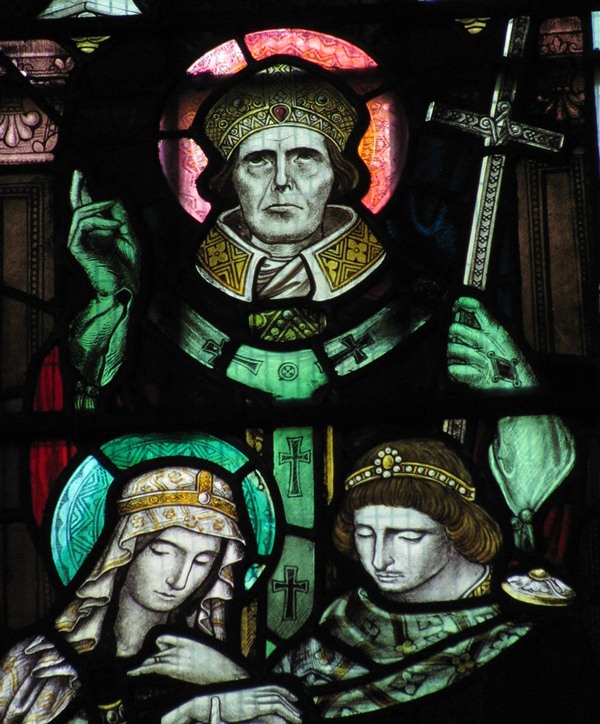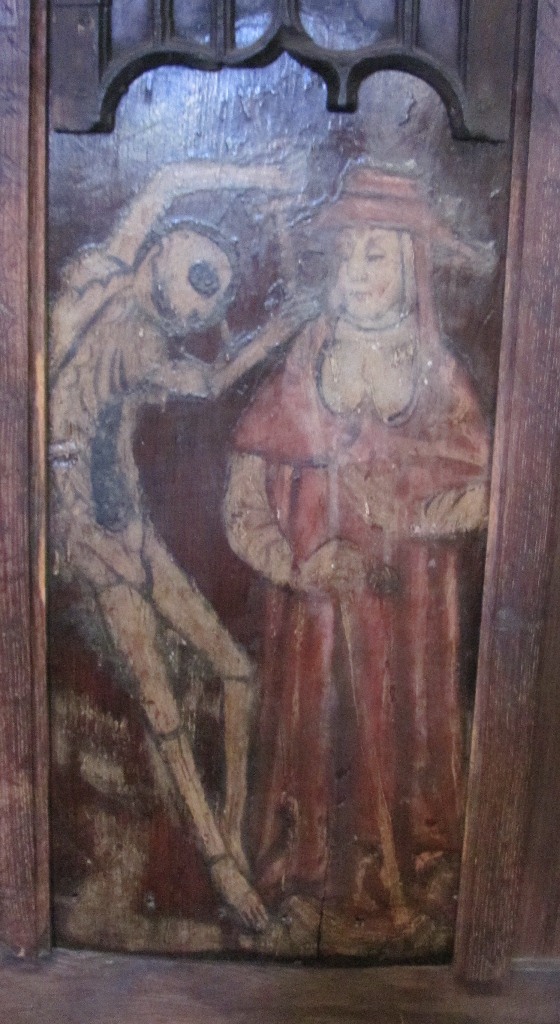Good grief, it's nearly the end of October and here I am just catching up with the loose bits of September. We'll start with a quick visit to Cardoness castle. Just outside Gatehouse of Fleet, it's only a short run from Kirkcudbright. You can just about squash a trip there in between cups of tea. It was built by the McCulloch family sometime around the 15th century
On the way in, there's a model to show what the castle would have looked like in around 1500 shortly after it was built.
Inside, most of the floors have gone (they would likely have been wooden I imagine) and you can see the fireplaces on the various levels. This was taken from what would have great hall on the second floor (that's the 3rd floor for those of you over the pond). The ground and first floors would have been cellars and kitchens and, of course, the dungeon.
Here's me standing in the main fireplace in the great hall. The hole in the side you can see there is the salt box. Salt was a precious commodity in those days and a wee cupboard at the side of the fire would have been the very dab for keeping it dry.
The salt box had a separate door into the hall.
You'd think I'd have had enough of spiral staircases this year. This one at least has a rope to hold onto.
The McCullochs were supporters of Mary Queen of Scots and in the 1560s, Queen Elizabeth of England must have felt a little threatened because she sent a spy over for a look, who reported thus -
"Cardines Towre standeth.....harde upon the watter of Flete: there can noo ordinance nor gounes endomage yt of the sea, nor there canoo artllare be taken to it upon the lande.... At the ground eb men may ryde under the place upoun the sandes one myle: and at the full sea boates of eight tonnes may come under the wall"
As you can see from this picture taken from the top of the castle, that in the following five centuries the sea has moves away some considerable distance and it doesn't look like a boat of any description, let alone eight tons, will be docking below the castle for some time to come.
Looking in the other direction you can see Gatehouse of Fleet less than a mile away and there in the car park, the Sandymobile, several flights of spiral staircase away.
There was a little time left after my visit to Cardoness Castle so I went for a little wander along the Water of Fleet where I saw these two dippers. It's reason enough to leave the house on its own.
Quite cheered by my sighting I wandered on further where, lo and behold, I saw another one.
I pass through Greenock on several occasions and have spotted this statue. It's in a most inconvenient place to stop but at the beginning of the month, I found as I was passing through, I was had a bit of free time, so parked up and wandered back to it. It's that man Andy Scott again (who appeared in last month's blog here). It's the nymph Egeria. Next to it on the pavement are the words of a poem written by local primary school girl Jaime Nicole Lynch,
"She has a body and a cloak made of metal
She wears a crown of oak leaves on her head
She stands tall and brave
She brings joy to GreenockWhen people pass by they smile at her
She is happy thay she brings joy"
We saw this curious table while drinking tea in Hexham.
This is their famous a old gaol, which we saw in the Millennium banner in the abbey a couple of blogs ago.
This is St Giles church in Chollerton in Northumbria.
Inside there are two windows to the Vicars Christopher Bird who were the vicars in 1821and 1867 respectively. This is Christopher Bird the father....
.... and his son. You'll see he holds a copy of the church (in the same way as saints connected to other churches and cathedral hold the church). It is because in 1875, under his care, a great deal of restoration was conducted on the church.
Most of the windows in the church were like these. If you'll look closely, you'll see that the pattern in them is made up of the broken remains of other stained glass windows.
Back in Evanton, we spotted this carved wooden seat in a park.
Ans a matching sofa.
As you leave the Black Isle, you'll spot a some trees festooned with old rags. If you enter the woods you'll find the situation is quite extensive. The rags are centred round an old well known as the Clootie Well. Wells are often supposed in folk lore to have magical healing properties. This one is said to date back to, and perhaps before, the time of St Boniface around 620AD , who performed a ceremony here. It is thought that is you tie a rags to the tree, an illness or some other unfortunate situation will disappear as the rag disintegrates - people should really have considered this and looked at the biodegradability of their rag before they tied it it up - I suspect a lot of people will be waiting a long time.
Still in the Black Isle, in the village of Rosemarkie, is a small museum dedicated to the Picts (mainly their carved art) called Groam House. If you're passing, it's well worth a visit and free. Outside it they have three mosaics made by local community groups under the guidance of artist Sally Purdy, based on the work of George Bain.
The museum contains the Pictish Stone known as the Rosemarkie stone, which contains both Christian imagary....
.....and those mysterious symbols whose meanings have disappeared into the mists of time.
A last beer before going offshore.
Cheers.

























































